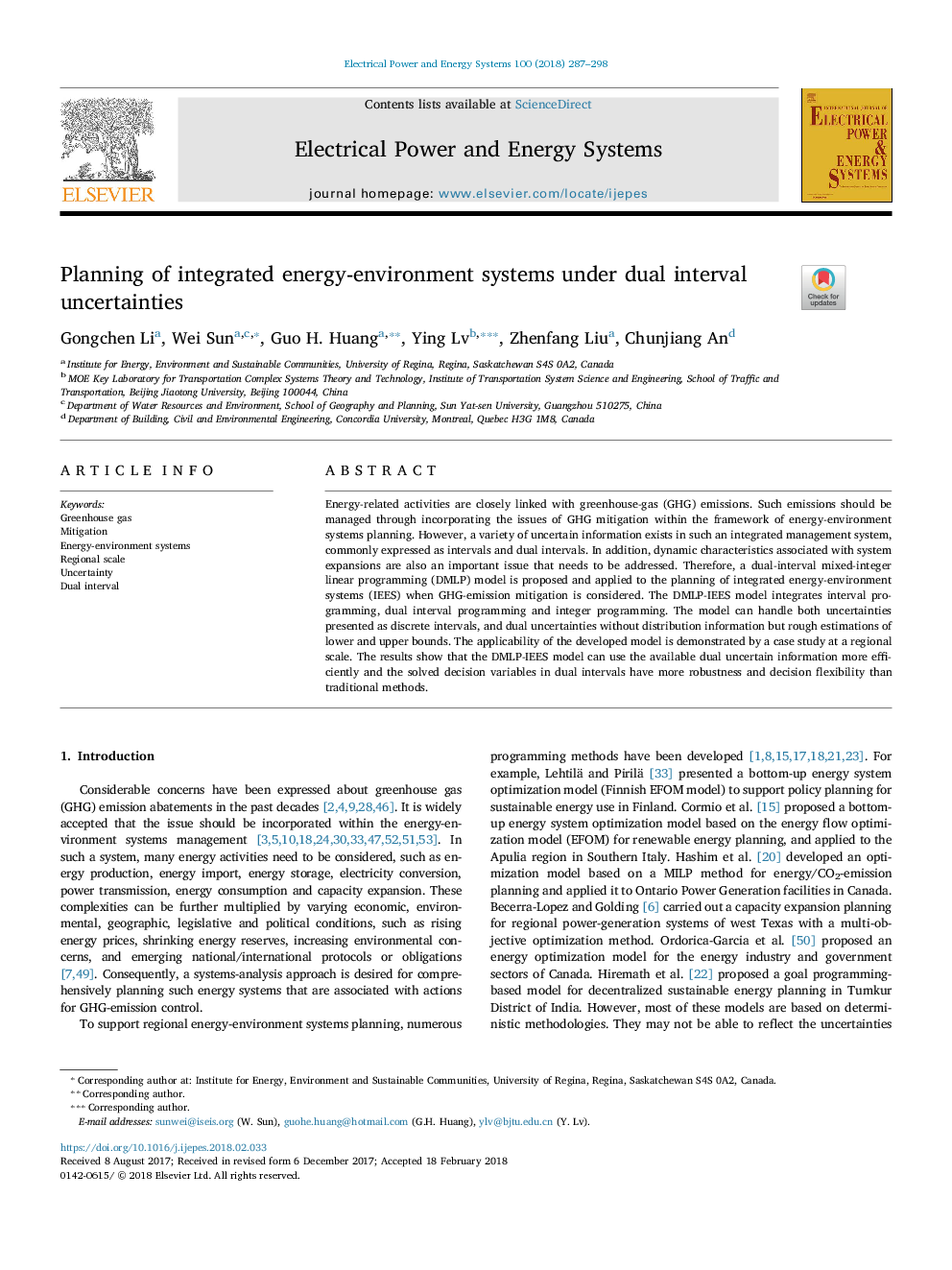ترجمه فارسی عنوان مقاله
برنامه ریزی سیستم های محیطی یکپارچه انرژی تحت نامطمئن بودن فاصله زمانی دوگانه
عنوان انگلیسی
Planning of integrated energy-environment systems under dual interval uncertainties
| کد مقاله | سال انتشار | تعداد صفحات مقاله انگلیسی |
|---|---|---|
| 112110 | 2018 | 12 صفحه PDF |
منبع

Publisher : Elsevier - Science Direct (الزویر - ساینس دایرکت)
Journal : International Journal of Electrical Power & Energy Systems, Volume 100, September 2018, Pages 287-298
ترجمه کلمات کلیدی
گاز گلخانه ای، تسکین دهنده، سیستم های انرژی محیط زیست، مقیاس منطقه ای، عدم قطعیت، فاصله دوگانه،
کلمات کلیدی انگلیسی
Greenhouse gas; Mitigation; Energy-environment systems; Regional scale; Uncertainty; Dual interval;

